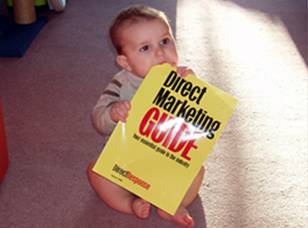The marketing plan

The marketing plan
The marketing plan may be developed for an individual product or for the entire company and all its products. The plan describes activities involved in achieving specific marketing objectives within a set timeframe. Using market research, the plan identifies specific customer needs and then details marketing strategies to fulfil them while generating an acceptable level of profit. It normally includes analysis of the current market situation with action programmes, budgets, sales forecasts, strategies, and projected financial statements.
Smaller businesses may keep their planning horizons firmly placed in the short term and their plan may be relatively informal, but larger firms are likely to produce a formal marketing plan outlining how it will achieve its marketing strategy and how this will contribute to the overall corporate objectives.
A marketing plan aims to help organise the strategy for a company, its products or services. It will be strongly influenced by the firm's strategic plan and the overall objectives of the business.
 Large business concerns, such as Nestle, will have a corporate plan and into that will fit the objectives of the smaller companies, which operate within the group. These might be divisions, such as those of the large brewery chains, which make beer, operate pubs and run other leisure businesses. Each division or subsidiary will have its plans for delivering what the parent, or 'corporate' business wants it to achieve. The marketing plan will detail individual marketing activities or strategic mix, which are designed to put those strategies into practice.
Large business concerns, such as Nestle, will have a corporate plan and into that will fit the objectives of the smaller companies, which operate within the group. These might be divisions, such as those of the large brewery chains, which make beer, operate pubs and run other leisure businesses. Each division or subsidiary will have its plans for delivering what the parent, or 'corporate' business wants it to achieve. The marketing plan will detail individual marketing activities or strategic mix, which are designed to put those strategies into practice.
A common method used to describe the elements of a marketing plan is the acronym AOSTC, which stands for:
Analysis: A situational analysis (SWOT) examining the firm's current position.
Objectives: Setting SMART objectives for the future - where the business is going.
Strategies: For achieving the objectives e.g. segmentation, targeting and positioning.
Tactics: Setting and application of the marketing mix.
Control: Using benchmarks and budgets to monitor performance.
In preparing its marketing plan, the management is likely to move through the following stages:
-
Where is the business now? An assessment of its present position
The management conducts a situational audit using SWOT analysis. This examines internal factors, controllable by the firm, by grouping its strengths and weaknesses. Then they examine external (PEST) factors, which influence the firm by creating opportunities or threats. -
Where is the business aiming to be in the future?
 Using the SWOT and relevant market research, the management will set SMART marketing objectives for business, such as targeting new customers and markets or gaining greater market share. Objectives need to be:
Using the SWOT and relevant market research, the management will set SMART marketing objectives for business, such as targeting new customers and markets or gaining greater market share. Objectives need to be:
- Specific
- Measurable
- Agreed
- Realistic
- Time-bonded
-
How will the business achieve its objectives?
The firm develops marketingstrategies outlining how it will 'deliver' day-to-day on the objectives. These are the firm's operational or tactical plans. The focus may be on increasing market share, or moving into new segments of current markets. In essence, this is the detail behind the 4 Ps of marketing mix. -
What are the revenues and costs generated in pursuit of its marketing objectives?
The firm will need to set detailed budgets showing a breakdown of expected revenues and costs by product, department or marketing activity. -
How will the marketing process be controlled?
The management will develop control mechanisms to measure marketing performance against forecast budgets and marketing objectives such as market share. The firm will conduct periodic marketing audits to ensure it is meeting the changing needs of its customers and if necessary marketing objectives may be revised to meet changing market conditions.
Benefits from planning
Businesses are seldom static organisations and they operate in quickly changing market places. A visible and widely agreed plan acts as a focus for the business.
Good planning helps the firm:
- ensure that marketing activity is focused on corporate objectives
- take advantage of market opportunities and to address business threats
- co-ordinate marketing activities and monitor how individual business functions are contributing to the success of the marketing plan
- provide employees with a 'sense of direction' which tends to improve morale and performance, which can have a considerable effect on the ability of the business to hit targets and maintain profitability
- react to changing environments and unexpected events
- reflect on stakeholder interests and identify how their aspirations will be met
- encourages a rational approach to making marketing decisions
Reviewing the marketing plan
Regular evaluation of the marketing plan is essential and criteria need to be set to provide formal assessment of progress. These will include analysis of:
- sales performance - this can be against product line, range, area or whatever other grouping the company wishes to use.
- market share - has it grown, if so by how much and what has happened to our rivals?
- profitability - are revenues and costs as forecast?
- customer reactions - are products satisfying customer needs?
All good marketing plans have a degree of flexibility. Changes in consumer tastes, economic and market conditions and competitor reactions all have to be incorporated into a revised marketing plan.
In recent times, certain management gurus or thinkers have begun to suggest that formalised planning is not always appropriate and indeed can be counter-productive.
Disadvantages of formalised marketing plans:
- They form a complex process which slows decision making
- They are time consuming and therefore costly to construct and follow
- They are not well suited to dynamic markets as there is a loss of flexibility in reacting to sudden change
- They can tend to become an end in themselves
Management writers such as Henry Mintzberg and Tom Peters have suggested that a more organic approach is necessary when firms operate in markets at the cutting edge of technology and must react quickly to changing environments. They believe that, in these circumstances, strategy emerges rather than being systematically formulated.

You can read about their ideas on their personal websites at:

1 |
Marketing planWhich of the following would not feature in a marketing plan? |
2 |
Competitor strategiesWhy would noting competitor strategies be important for a business? |
3 |
Predicting the futureWhy might a business want to make accurate predictions about future events? |